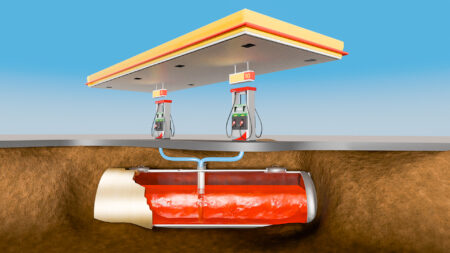Table of Contents
In the year 2000, a German satellite called CHAMP was launched into orbit to study the Earth’s atmosphere and magnetic field. It operated for over 10 years and although it’s relatively unknown, it made an unexpected discovery that taught us some interesting things about our atmosphere. As it flew over the North Pole, it came across a dense pocket of air which started to slow the satellite down. Although the atmosphere is almost non-existent at this altitude, there are still small traces of atmosphere floating around.
But when CHAMP passed through the pocket of air, it measured an increase in air density of almost double the expected value. Scientists weren’t aware at the time, but this pocket of dense air was being caused by an aurora.
How Auroras affect our atmosphere
These dazzling displays of light have fascinated the human race for centuries. Unlocking the mystery of auroras took hundreds of years – and today, scientists are still learning more. Deep in the Arctic tundra, researchers are studying a different kind of aurora which is causing our atmosphere to leak into space.

Records of auroras date back to prehistoric paintings – but the first scientific observation was made in 1790 by scientist Henry Cavendish. He used triangulation to estimate that auroras were taking place around 100 kilometers above the Earth’s surface. But what causes these Auroras?
Our magnetic field
Over time, scientists learned that auroras are an effect of how the Sun interacts with Earth. Earth has a magnetic field which protects us from the Sun’s solar wind. These solar winds are made up of charged particles which shoot out from the Sun with enormous amounts of energy. When the charged particles arrive at Earth, most of them are deflected by our magnetic field. But at the North and South poles, they can sneak through and briefly interact with our atmosphere. Here you can see how the magnetic field lines start at the North pole and curve out, revealing a whole in our magnetic field.

These charged particles have a massive amount of kinetic energy which is transferred into the particles of our atmosphere when they collide. They collide with our atmosphere at such a high speed that the energy has to be released in some way. This interaction releases energy in the form of light, creating the beautiful display we know as the aurora. Specific colors of light are released depending on the type of particle and the amount of energy being transferred. Oxygen particles typically emit a yellow or reddish hue while nitrogen emits blue light. This is why Auroras are only visible and locations that are close to the North and South poles.
Despite the enormous amounts of energy involved in auroras, the particles quickly return to a normal state and our atmosphere is unharmed. For a while, scientists believed that oxygen was too heavy to escape Earth’s gravity – so when CHAMP discovered pockets of air at unusually high altitudes, they weren’t worried about it leaving Earth.
Escaping oxygen particles
But when scientists started to study the near Earth regions of space, they found large amounts of ionized oxygen which could only have originated from Earth. Somehow, the oxygen particles in our atmosphere were getting enough energy to escape Earth’s gravitational pull.
The north and south poles are the only points where our magnetic field comes into contact with Earth. The magnetic field lines run parallel with most of the Earth’s surface but curve towards each pole.

When the Sun’s charged particles arrive at Earth, they are forced to travel along the magnetic field lines, causing most of them to meet at the poles where they interact with Earth’s atmosphere. At this point, the charged particles have a direct path through to our atmosphere. This gap in our magnetic field creates a phenomenon known as the ‘cusp aurora’.
Cusp auroras
With cusp auroras, solar winds are accelerated through the gap, creating a very concentrated area with intense heat and kinetic energy. As the charged particles collide with the particles in our atmosphere, they receive enough energy to escape Earth’s gravitational pull, causing streams of oxygen to leak into space.
While a normal aurora can be observed almost every night in the Arctic, the cusp aurora only appears at midday during a polar night when the arctic experiences a full day of darkness. To make it even more difficult to observe, the cusp doesn’t have a fixed position and it constantly moves around the Arctic regions.
But when these colorful lights finally appear, it signals that hundreds of tons of oxygen are escaping Earth’s atmosphere. Although this can only be observed for a short period of time each day, this is only a fraction of what is actually happening. When we look at the Earth in ultraviolet light, we can see that auroras are constantly happening throughout the day. Our eyes simply can’t detect the wavelengths of light that are present during the majority of Auroras. Thanks to the image below taken by the Hubble Telescope, we can see what auroras look like in Ultraviolet Light. But Earth is not the only planet to experience auroras.

The Hubble Space Telescope was able to capture a very similar aurora process happening on Jupiter by viewing it in ultraviolet light. Mars used to be a lot like Earth, but the solar wind stripped away its atmosphere over billions of years, leaving small magnetic fields dotted around the planet.
Eventually, our atmosphere will experience a similar fate. Every day, over 100 tonnes of our atmosphere escapes into space. Fortunately, at this rate, it would take billions of years for our atmosphere to completely disappear. And while auroras are one of the many wonders of our night sky, the process behind them is a shocking reminder of how fragile our planet really is.













I don’t think the title of your article matches the content lol. Just kidding, mainly because I had some doubts after reading the article.